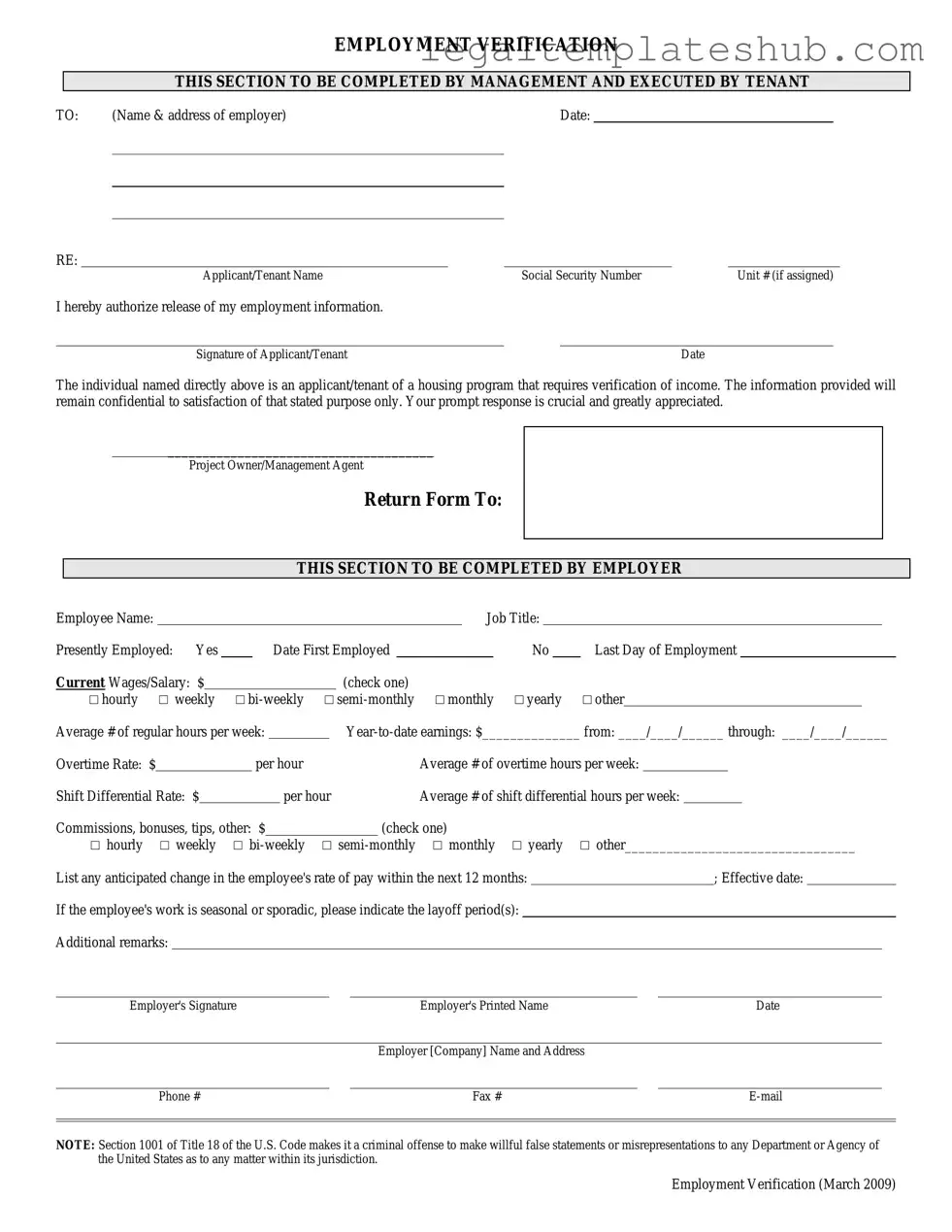Blank Employment verification form PDF Form
The Employment Verification Form is a document used by employers to confirm the employment status and details of an individual. This form plays a crucial role in various processes, such as background checks or loan applications, where proof of employment is required. To ensure a smooth verification process, consider filling out the form by clicking the button below.
Access Editor
